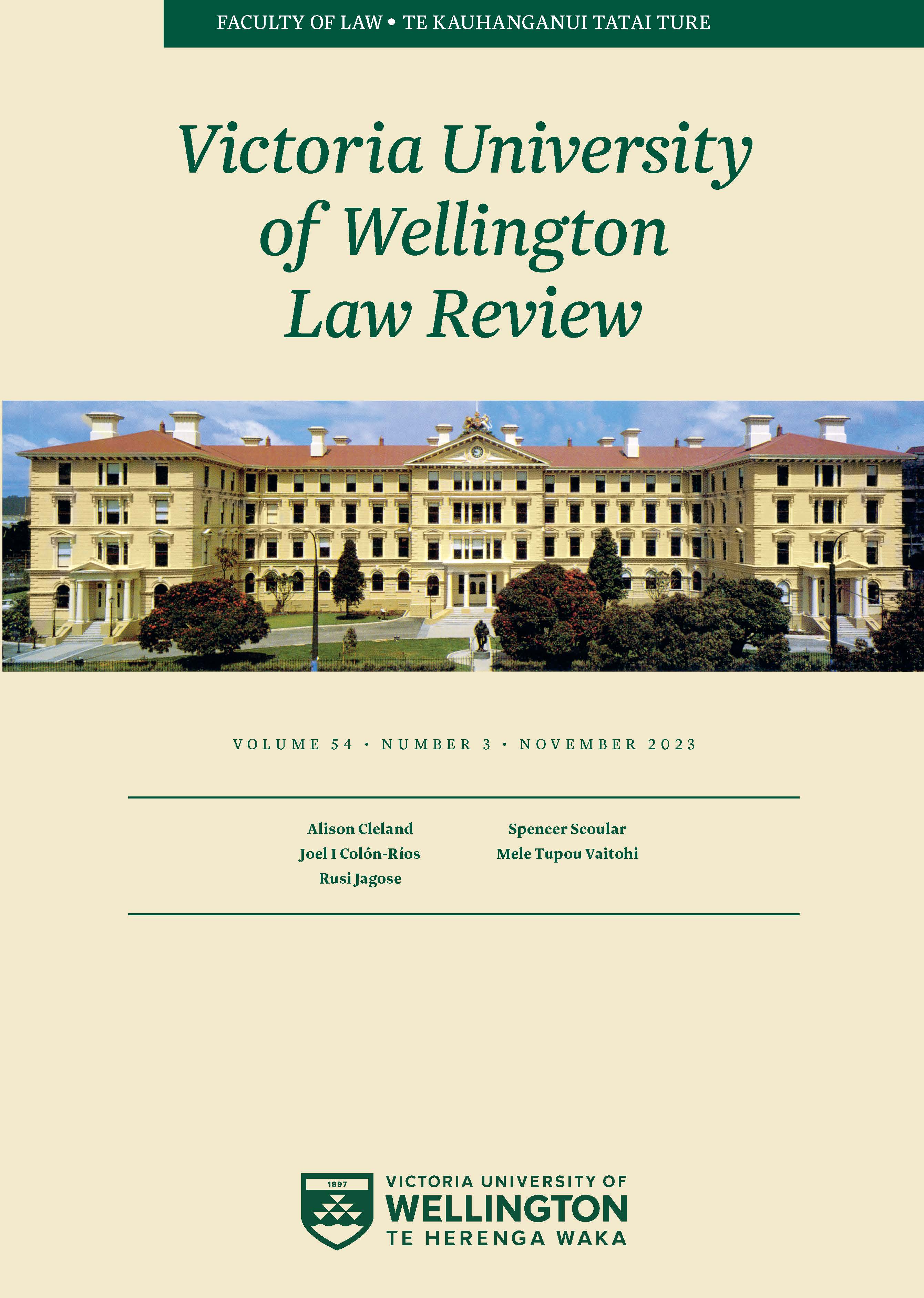Catholic Canon Law and Homosexuality: An Assessment of the Natural Law Justification for Homosexual Intolerance
DOI:
https://doi.org/10.26686/vuwlr.v54i3.8788Abstract
The Catholic Church is a global power capable of influencing the development of domestic law in multiple jurisdictions. This influence can be obvious, such as where politicians vote according to a religiously formed conscience. The influence of the Church can also be more subtle. At the heart of several social conventions is a collection of traditional societal norms that originated within the boundaries of the Catholic canon law. In many states these conventions have developed naturally due to advancements in modern philosophical and scientific thought. However, in states with strong Catholic or Christian traditions, societal development is prone to stagnation due to conflicts between the official canons, the more liberal canons and societal development. One example where this conflict is most obvious is the canon law surrounding homosexuality. The official position of the canon law is conservative. Homosexuality is treated as a disease-like condition requiring strict abstinence to achieve spiritual enlightenment. The foundation for this position derives from natural law theory. Natural law theorists repel suggestions for reform based upon the idea that the rules stemming from natural law theory are either divine in origin or are articulations of naturally existing goods. I make the appraisal that the natural law foundation to the conservative position collapses when the true historical origins and motivations for the traditional position are revealed. When the origins of the canon law are no longer regarded as "divine in nature", the law can be more receptive to societal development.
Downloads
Downloads
Published
How to Cite
Issue
Section
License
Authors retain copyright in their work published in the Victoria University of Wellington Law Review.


